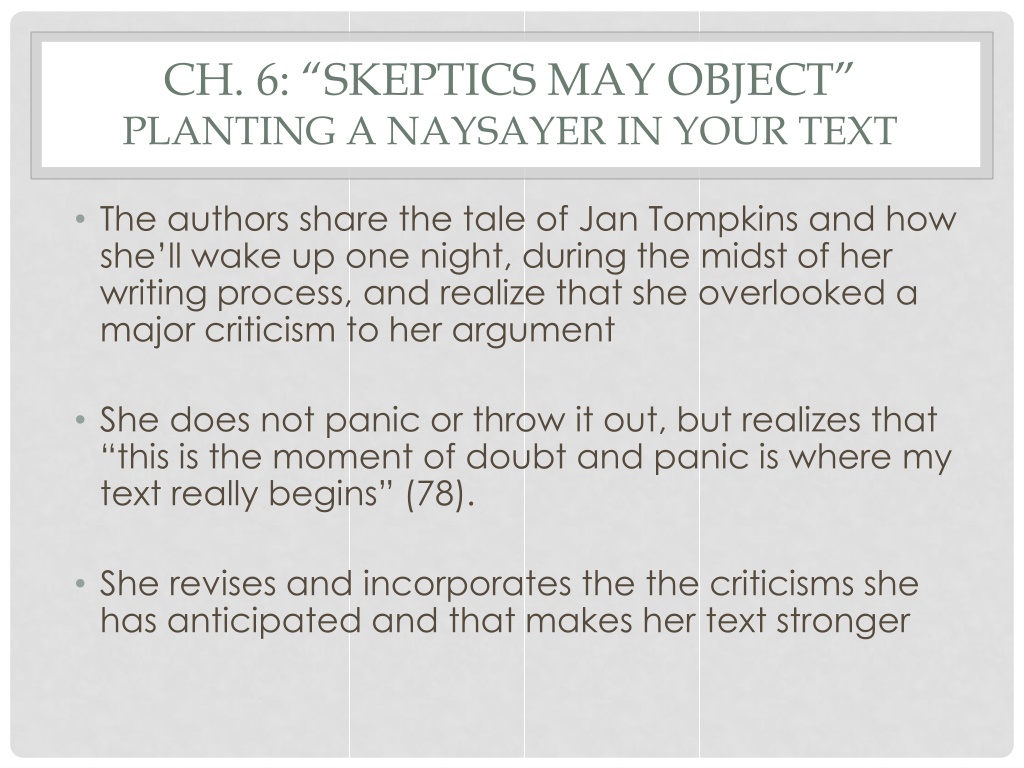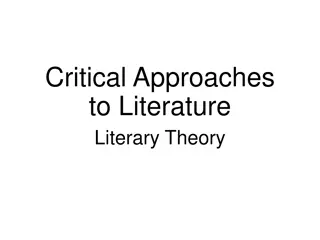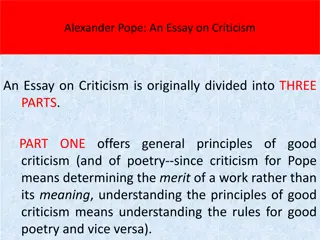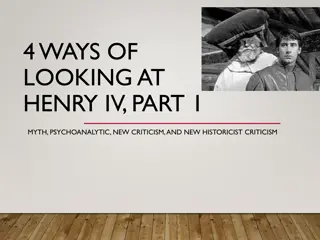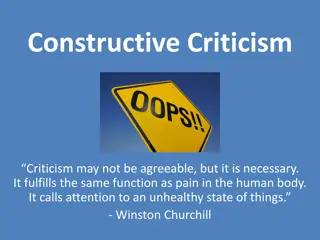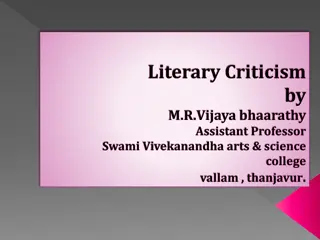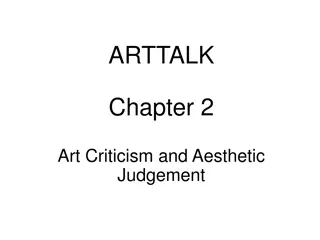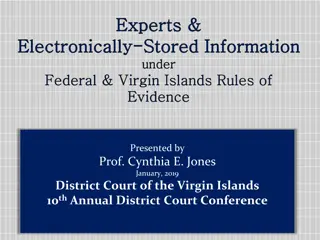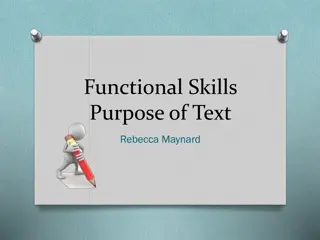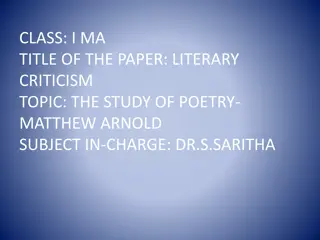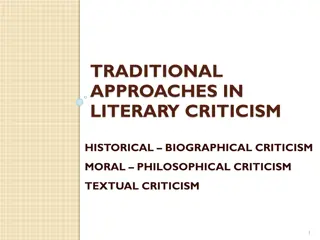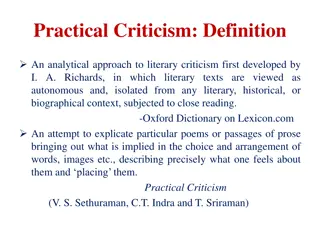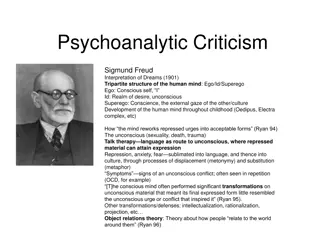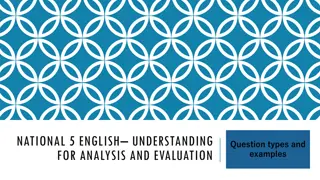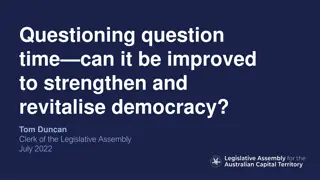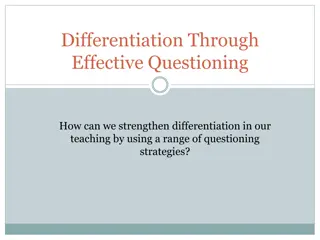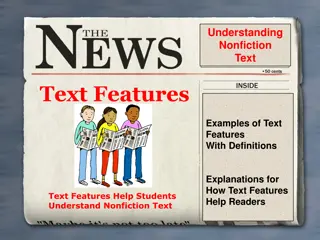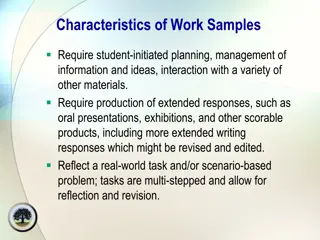Embracing Criticism: Strengthening Your Text Through Anticipating Objections
Authors in chapter 6 discuss the importance of incorporating criticisms into your writing to strengthen your arguments. They share Jan Tompkins' experience of overcoming doubts and incorporating anticipated objections to enhance the text's credibility. By acknowledging and addressing naysayers, writers can engage in constructive dialogue and improve the quality of their work.
Download Presentation

Please find below an Image/Link to download the presentation.
The content on the website is provided AS IS for your information and personal use only. It may not be sold, licensed, or shared on other websites without obtaining consent from the author. Download presentation by click this link. If you encounter any issues during the download, it is possible that the publisher has removed the file from their server.
E N D
Presentation Transcript
CH. 6: SKEPTICS MAY OBJECT PLANTING A NAYSAYER IN YOUR TEXT The authors share the tale of Jan Tompkins and how she ll wake up one night, during the midst of her writing process, and realize that she overlooked a major criticism to her argument She does not panic or throw it out, but realizes that this is the moment of doubt and panic is where my text really begins (78). She revises and incorporates the the criticisms she has anticipated and that makes her text stronger
THE LESSON IS Criticisms make our works stronger. Our writing improves from by listening to the objections Naysayers make our texts stronger
ANTICIPATE OBJECTIONS The authors make this statement: Isn t the advice to incorporate critical views a recipe for destroying your credibility and undermining your argument? Here you are, trying to say something that will hold up (79). Tell your readers Tell them what others will say will actually enhance your ethos. The point here is that writing well does not mean piling up uncontroversial truths in a vacuum; it means engaging others in a dialogue or debate (79). The authors state that the more you give voice to your critics objections, the more you tend to disarm those critics, especially if you go on to answer their objections in convincing ways (79).
TEMPLATES FOR ENTERTAINING OBJECTIONS At this point I would like to raise some objections that have been inspired by the skeptic in me. She feels that I have been ignoring the complexities of the situation. Yet some readers may challenge my view by insisting that . Of course, many will probably disagree on the grounds that .
TEMPLATES FOR NAMING YOUR NAYSAYERS Here many feminists would probably object that gender does influence language. But social Darwinists would certainly take issue with the argument that . Biologists, of course, may want to question whether . Nevertheless, both followers and critics of Malcolm X will probably suggest otherwise and argue that .
LABELS AND NAYSAYERS Some people really take offense to labels: feminists, Darwinists, biologists, etc. It can feel like generalizing. However, since the life of ideas, including many of our most private thoughts, is conducted through groups and types rather than solitary individuals, intellectual exchange requires labels to give definition and serve as a convenient shorthand (83).
MINIMIZING GENERALIZATION You will want to minimize the generalization and stereotyping. To do this, refine and qualify their use (84). Try these then: Although not all Christians think alike, some of them will probably dispute my claim that . Non-native English speakers are so diverse in their views that it s hard to generalize about them, but some are likely to object on the grounds that .
TEMPLATES FOR INTRODUCING OBJECTIONS INFORMALLY Objections But is my proposal realistic? What are the chances of its actually being adopted? Yet is it necessarily true that have been suggesting that ? Is it always the case, as I ? However, does the evidence I ve cited prove conclusively that ? You can also let your naysayer speak directly: Impossible, some will say. You must be reading the research selectively.
REPRESENT OBJECTIONS FAIRLY When you are introducing an opinion that is counter or opposing to your own, make sure you don t fall prey to the temptation to give opposing views short shrift, to hurry past them, or even to mock them, doing so is usually counterproductive. When writers make the best case they can for their critics (playing Peter Elbow s believing game ), they actually bolster their credibility with readers rather than undermine it. They make readers think, This is a writer I can trust. (86). Don t mock others points of view, remain respectful
ANSWER OBJECTIONS Even when you represent objections successfully, you still have to answer those objections The authors mention that a surefire way to fail to overcome an objection is to dismiss it out of hand (88). Perhaps the best way to overcome an objection is not to try to refute it completely but to agree with part of it while challenging only the part you dispute. In other words, in answering counterarguments, it is often best to say yes, but or yes and no, treating the counterview as an opportunity to revise and refine your own position. (88)
TEMPLATES FOR MAKING CONCESSIONS WHILE STILL STANDING YOUR GROUND Although I grant that the book is poorly organized, I still remain that it raises an important issue. Proponents of X are right to argue that exaggerate when they claim that . But they . While it is true that . , it does not necessarily follow that On the one hand, I agree with X that hand, I still insist that . But on the other .
CH. 6 - EXERCISES Look over something you ve written that makes an argument. Check to see if you ve anticipated and responded to any objections. If not, revise your text to do so. If so, have you anticipated all the likely objections? Who if anyone have you attributed the objections to? Have you represented the objections fairly? Have you answered them well enough, or do you think you now need to qualify your own argument? Could you use any of the language suggested in this chapter? Does the introduction of a naysayer strengthen your argument? Why, or why not?
